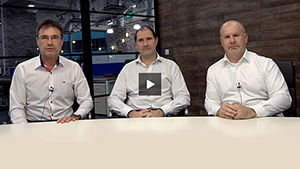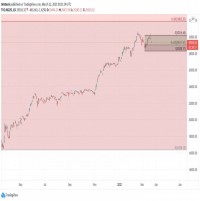|
Matthias Knab interviewed TradeFlow founders Tom James and John Collis in Singapore for Opalesque.TV It is well known that the trade finance asset class offers strong portfolio diversification away from financial markets and it is offering investors strong yields. Investors like Trade Finance, but are unable to get enough of it as scalability of trade finance strategies has been a major challenge. Until now. Conservatively, commodity trade represents around 25% of world trade, or around US$4.5 trillion per year. Commodities are the essentials of not just our lives, but the life of anyone around the world. However, the trade finance gap this sector needs to cope with is estimated to be $1.5 trillion. Most commodity trade finance transactions are below $15m, which is exactly the chronically underfunded transaction size that is underserved by the traditional banking sector. Already in 2016, the founders of TradeFlow Capital Management realised that trade finance was ripe for a FinTech disruption and designed a solution in collaboration with global banks as partners to solve their challenge to effectively support the trade finance needs of SME firms in the bulk physical commodity markets whose transaction sizes were below US$15m. TradeFlow’s holistic digital solution enables a non-credit / non-lending approach which is key to being able to support SME firms without taking credit risk directly on them but instead investing in and taking full ownership and logistical control of the Commodity in their underlying transactions. It steps in between suppliers and buyers with a Master Agreement, becoming the Principal and owner of the goods, instead of a lender. Thus, they have created a trade finance fund that doesn’t lend out money, eliminates a lot of the traditional challenges in trade finance, digitises the entire trade finance workflow, utilises technology to enhance security, increase operational efficiency, and reduce risks and costs. Its digital platform can handle and scale large numbers of transactions including Electronic Bills of Lading, and Documentation processing and offers automated Insurance services for cargo risk, and other standard shipping / storage risk cover. It offers scalable and secure access for investors to trade finance, bulk commodities, SMEs - but not through credit but by investing in and taking full ownership of the underlying commodity transaction. The CEMP - U.S. Dollar Trade Flow Fund SP was launched in April 2018 and takes a principal position and direct ownership of the commodities during shipment or during a pre-agreed storage period. This platform has already put its mark on international trade by allowing the opening of new trade routes between countries that never exported to each other, making “material differences” to farmers in Africa. Another major achievement has been technology and big-data enabled automation to solve the KYC bottleneck which often was the key operational hurdle for trade finance, bringing down processing time from 6 months to just 3 hours. As the Fund does not lend money nor give credit it offer a truly asset backed strategy and one which does not compete with banks and traditional trade finance lending sources. As a result, banks work with the Fund and introduce SME clients who they are unable to effectively support; usually due to the fact their transaction sizes are too small and their annual turnover below US$300m. Swapping pure credit risk for real-world insurable physical risk This non-credit approach to enabling physical commodity import/export transactions, which is unique in the trade finance hedge fund world, swaps pure credit risk faced by investors in other trade finance funds for real-world insurable physical risks. The fund does this by simultaneously entering in to a purchase contract for the commodity from the supplier at a fixed price and an onward sales contract to the end buyer at a fixed price, the Fund is not exposed to price risk per se, only if the end buyer were to default by not paying the full value of the cargo upon delivery could the Fund be potentially exposed to the commodity asset price falling. This statistically low risk event is mitigated by the risk management methodology employed by the Fund, which has been tested and proved robust in this first quarter. The Fund uses fees from end buyers to ensure the Fund has a price risk buffer that in the very unlikely event the end buyer does not pay the balance due payable for the commodity upon delivery, the Fund has some price buffer and cash available to cover potential costs of selling the commodity to another buyer and recovering the original investment made by the Fund. It is quite possible that the end buyer defaults but prices of the commodity has increased, in which case there is the potential for the Fund to make a higher profit on the transaction. TradeFlow has also developed bespoke scorecards in cooperation with Lloyds of London underwriters for scoring Counterpart Risk, and a world’s first unique scorecard approach to rate the risk level on each and every individual transaction it invests in. The Fund offers 90 day liquidity to investors and as a result is often referred to as a fixed income alternative and even used as a cash management tool. Watch the Opalesque.TV video here: https://www.opalesque.tv/hedge-fund-videos/tradeflow-capital-management/1 
| ||||
|
Horizons: Family Office & Investor Magazine
Singaporean FinTech disruption helps closing $1.5tn trade finance gap and enabling trade for SMEs globally |
|





 RSS
RSS









